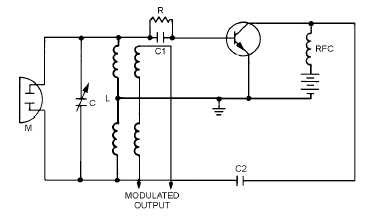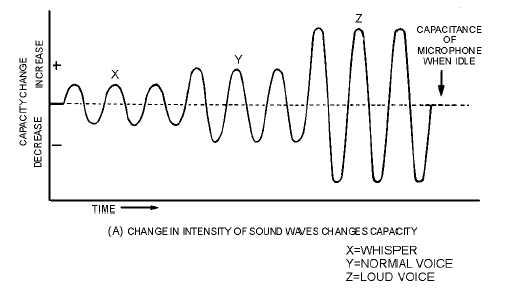2-10
the rate at which the capacitance of the microphone changes. This rate of change is caused by the
frequency of the sound wave. For example, suppose a 1,000-hertz tone of a certain loudness strikes the
microphone. The frequency of the carrier will then shift by a certain amount, say plus and minus 40
kilohertz. The carrier will be shifted 1,000 times per second. Now assume that with its loudness
unchanged, the frequency of the tone is changed to 4,000 hertz. The carrier frequency will still shift plus
and minus 40 kilohertz; but now it will shift at a rate of 4,000 times per second. Likewise, assume that at
the same loudness, the tone is reduced to 200 hertz. The carrier will continue to shift plus and minus 40
kilohertz, but now at a rate of 200 times per second. If the loudness of any of these modulating tones is
reduced by one-half, the frequency of the carrier will be shifted plus and minus 20 kilohertz. The carrier
will then shift at the same rate as before. This fulfills all requirements for frequency modulation. Both the
frequency and the amplitude of the modulating signal are translated into variations in the frequency of the
rf carrier.
Figure 2-6.—Oscillator circuit illustrating frequency modulation.
Figure 2-7A.—Capacitance change in an oscillator circuit during modulation. CHANGE IN INTENSITY OF
SOUND WAVES CHANGES CAPACITY.



